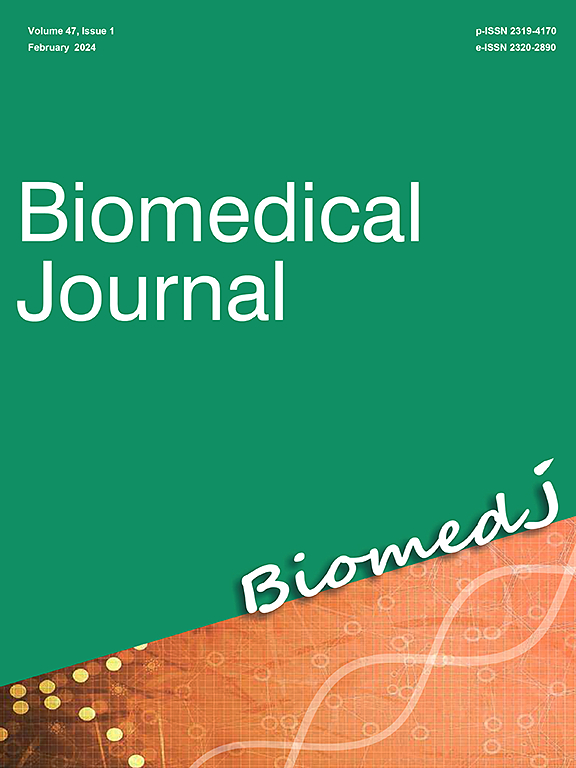ECG-surv: A deep learning-based model to predict time to 1-year mortality from 12-lead electrocardiogram
IF 4.4
3区 医学
Q2 BIOCHEMISTRY & MOLECULAR BIOLOGY
引用次数: 0
Abstract
Background
Electrocardiogram (ECG) abnormalities have demonstrated potential as prognostic indicators of patient survival. However, the traditional statistical approach is constrained by structured data input, limiting its ability to fully leverage the predictive value of ECG data in prognostic modeling.
Methods
This study aims to introduce and evaluate a deep-learning model to simultaneously handle censored data and unstructured ECG data for survival analysis. We herein introduce a novel deep neural network called ECG-surv, which includes a feature extraction neural network and a time-to-event analysis neural network. The proposed model is specifically designed to predict the time to 1-year mortality by extracting and analyzing unique features from 12-lead ECG data. ECG-surv was evaluated using both an independent test set and an external set, which were collected using different ECG devices.
Results
The performance of ECG-surv surpassed that of the Cox proportional model, which included demographics and ECG waveform parameters, in predicting 1-year all-cause mortality, with a significantly higher concordance index (C-index) in ECG-surv than in the Cox model using both the independent test set (0.860 [95% CI: 0.859–0.861] vs. 0.796 [95% CI: 0.791–0.800]) and the external test set (0.813 [95% CI: 0.807–0.814] vs. 0.764 [95% CI: 0.755–0.770]). ECG-surv also demonstrated exceptional predictive ability for cardiovascular death (C-index of 0.891 [95% CI: 0.890–0.893]), outperforming the Framingham risk Cox model (C-index of 0.734 [95% CI: 0.715–0.752]).
Conclusion
ECG-surv effectively utilized unstructured ECG data in a survival analysis. It outperformed traditional statistical approaches in predicting 1-year all-cause mortality and cardiovascular death, which makes it a valuable tool for predicting patient survival.
ECG-surv:基于深度学习的模型,通过 12 导联心电图预测 1 年死亡时间。
背景:心电图(ECG)异常已被证明具有作为患者生存预后指标的潜力。然而,传统的统计方法受到结构化数据输入的限制,无法充分利用心电图数据在预后建模中的预测价值:本研究旨在引入并评估一种深度学习模型,该模型可同时处理删减数据和非结构化心电图数据,用于生存分析。我们在此介绍一种名为 ECG-surv 的新型深度神经网络,它包括一个特征提取神经网络和一个时间到事件分析神经网络。该模型专门设计用于通过提取和分析 12 导联心电图数据中的独特特征来预测 1 年死亡率。使用独立测试集和外部集对 ECG-surv 进行了评估,这些测试集是使用不同的心电图设备收集的:结果:在预测 1 年全因死亡率方面,ECG-surv 的性能超过了包含人口统计学和心电图波形参数的 Cox 比例模型,在使用独立测试集时,ECG-surv 的一致性指数(C-index)明显高于 Cox 模型(0.860 [95% CI: 0.859- 0.861] vs. 0.796 [95% CI: 0.791- 0.800])和外部测试集(0.813 [95% CI: 0.807- 0.814] vs. 0.764 [95% CI: 0.755- 0.770])。ECG-surv对心血管死亡的预测能力(C指数为0.891 [95% CI:0.890- 0.893])也非常出色,优于Framingham风险Cox模型(C指数为0.734 [95% CI:0.715-0.752]):ECG-surv在生存分析中有效地利用了非结构化心电图数据。结论:ECG-surv 在生存分析中有效地利用了非结构化心电图数据,在预测 1 年全因死亡率和心血管死亡方面优于传统的统计方法,是预测患者生存的重要工具。
本文章由计算机程序翻译,如有差异,请以英文原文为准。
求助全文
约1分钟内获得全文
求助全文
来源期刊

Biomedical Journal
Medicine-General Medicine
CiteScore
11.60
自引率
1.80%
发文量
128
审稿时长
42 days
期刊介绍:
Biomedical Journal publishes 6 peer-reviewed issues per year in all fields of clinical and biomedical sciences for an internationally diverse authorship. Unlike most open access journals, which are free to readers but not authors, Biomedical Journal does not charge for subscription, submission, processing or publication of manuscripts, nor for color reproduction of photographs.
Clinical studies, accounts of clinical trials, biomarker studies, and characterization of human pathogens are within the scope of the journal, as well as basic studies in model species such as Escherichia coli, Caenorhabditis elegans, Drosophila melanogaster, and Mus musculus revealing the function of molecules, cells, and tissues relevant for human health. However, articles on other species can be published if they contribute to our understanding of basic mechanisms of biology.
A highly-cited international editorial board assures timely publication of manuscripts. Reviews on recent progress in biomedical sciences are commissioned by the editors.
 求助内容:
求助内容: 应助结果提醒方式:
应助结果提醒方式:


